|
|
|
|
2010 Chevrolet Camaro SS |
|
|
|
|
|||
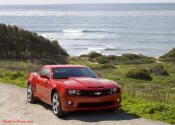 |
 |
 |
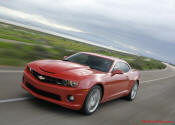 |
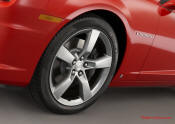 |
 |
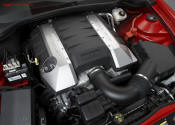 |
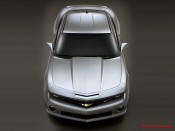 |
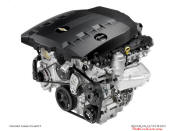 |
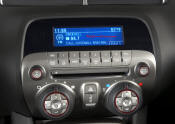 |
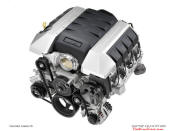 |
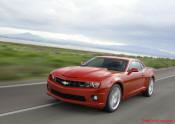 |
|
|
|||
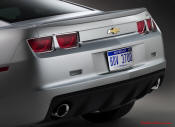 |
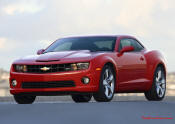 |
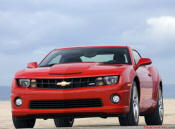 |
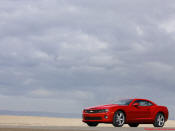 |
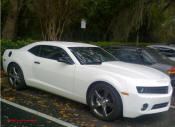 |
 |
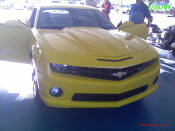 |
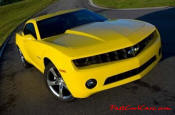 |
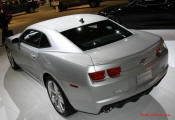 |
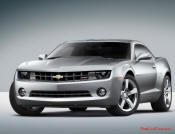 |
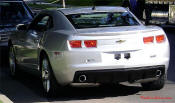 |
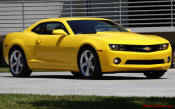 |
|
|
|||
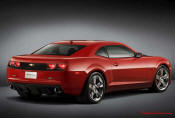 |
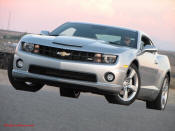 |
 |
 |
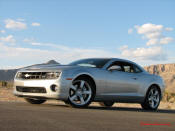 |
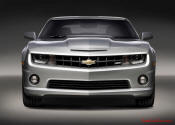 |
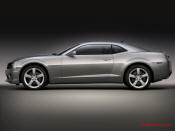 |
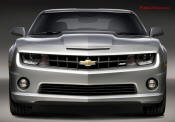 |
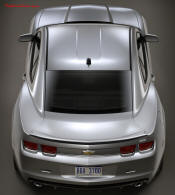 |
 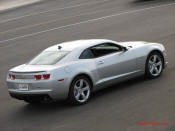 |
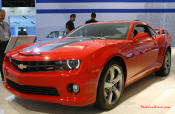 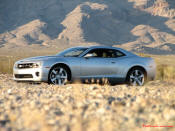 |
 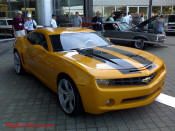 |
|
|
|||
 |
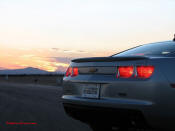 |
 |
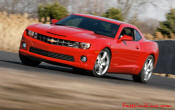 |
|
|
|||
|
2010 Camaro SS
-Times Have Changed...but Not That Much By Daniel Pund, Senior Editor, Detroit Email - Date posted: 03-20-2009 The last thing General Motors needs right now is to appear as if it's stuck in the past, creating gas-guzzling cars that are out of step with what the federal government thinks is the future. So even when Chevrolet steps into the way-back machine to unveil the 426-horsepower retro-inflected 2010 Chevy Camaro SS, it's careful to mention that this muscle/pony car is the "sports car for the 21st century" and emphasizes the Camaro's fuel economy ratings more than its 0-60-mph performance. So we did what had to be done. We dropped an asphalt-melting burnout in the parking lot of a former seminary that was of such destructive length that the guys hired by Chevy to prep and clean the Camaros had time to wander over and say, "Stop. You're done." Had a Dairy Queen been available we would have laid a patch in front of that, too. Look, man. We've been waiting for years for the arrival of this car; there will be time to talk about balance and the quality of the interior materials later. No Smoking That rite of Camaro passage accomplished, we strapped on our Racelogic VBOX III GPS-based testing equipment to get the measure of the new Camaro's less juvenile performance characteristics. Our test vehicle is the hottest available setup for the 2010 Chevy Camaro, an SS manual. When you choose the Tremec TR6060 six-speed manual as your gearbox of choice you get an LS3 6.2-liter V8 in the deal. That's the same motor that powers the base Corvette. In the Camaro it makes 426 hp at 5,900 rpm and 420 pound-feet of torque at 4,600 rpm. Order the six-speed automatic and Chevy will fill your engine bay with a 400-hp, lower-revving, lower-compression L99 6.2-liter V8 that comes with cylinder deactivation. It'll deliver 25 mpg on the highway. But the manual will do 24 mpg highway and costs $995 less than the automatic model, so we'll take the extra power, thank you very much. The SS manual also comes with a 3.45 rear end (compared to the 3.27 in all other Camaros). The combination is good for drama-free 0-60-mph sprints of 5 seconds (or 4.7 seconds with a 1-foot rollout like on a drag strip). Easy. Get the 275/40ZR20 Pirelli P Zero summer tires slipping a little at launch, modulate the throttle, and off the Camaro goes, pouring its bass-heavy exhaust note down the road. It reaches the quarter-mile mark in 13 seconds at 110.9 mph. Predictably, one of the Camaro's obvious rivals, the big-'n-brawny Dodge Challenger R/T can't keep pace. It takes 5.5 seconds for the Mopar to reach 60 mph (5.3 with 1 foot of rollout) and 13.9 seconds to reach the quarter-mile, at which point it's steaming along at 103.2 mph. In fact, the Camaro SS is slightly quicker in both measures than the similarly powered Challenger SRT8. The 2010 Mustang makes up for much of its 111-hp power deficit with about a 500-pound weight advantage on the hefty Camaro. The Mustang with a Track Pack will do zero to 60 mph in 5.2 seconds (4.9 with rollout) and get through the quarter-mile in 13.5 seconds at 102.9 mph. The Camaro is quicker through the quarter by half-a-second than the Nissan 370Z, which Chevy also considers a Camaro competitor. The 2010 Chevy Camaro SS manual is the one Camaro that comes with a launch control system. It's foolproof and easy to initiate (punch Competition mode on the traction/stability control system, mat the accelerator and sidestep the clutch) but we found that we were quicker just shutting off all traction and stability control systems and doing it ourselves. 21st-Century Brute For all the company's insistence that the Camaro is a fully modern sport coupe, the Camaro SS feels remarkably like, well, a Camaro. This isn't some Honda S2000 hardtop, pal. Mash the throttle and the Camaro's peaked nose rises and the exhaust goes full-volume WAAAAUUUGH simultaneously in a way any muscle/pony car fan will recognize. To call it punchy is an understatement. The Tremec transmission (a version of which is bolted into virtually every rear-wheel-drive American performance car) doesn't respond to wrist flicks. Hell no. You employ a full-power yank or shove that requires the use of your entire right arm. The only thing tempering the hell-raising fun is the Camaro's weight, both perceived and actual. The car feels dense and a little larger than it is. This is, in part, because of the car's styling. Short side glass, a small, high-mounted backlight and a steeply raked windshield give the Camaro the chunk-of-badass look from the outside. Sitting inside the thing, though, is like walking around with your shoulders shrugged and a baseball cap slammed down low on your head. This has the effect of diminishing the sensation of speed, even as it climbs quickly to extralegal levels. That Other 21st-Century Stuff Possibly you expected that a V8 Camaro would accelerate hard. Thanks to a shortened and reworked version of the Pontiac G8's Australian-bed platform and independent rear suspension, the 2010 Camaro can also go around turns. First, some numbers. The 2010 Chevy Camaro SS rides on summer performance tires measuring 245/45ZR20 up front and 275/40ZR20 out back. Live where it snows? Factor a set of winter tires into your budget. And all SS versions come with what Chevy calls the FE3 suspension tuning, which has stiffer springs and fatter antiroll bars than the FE2 setup of the V6 Camaros. At the track, all that hardware translates to a maximum 68.6-mph speed through our slalom and 0.88g on the skid pad. Here the lack of visibility was a hindrance through the slalom as well. It's difficult to see where the corners of this car are while you're driving. For most sane people, this sensation makes one overestimate the size of the car in order to ensure a safe distance from other cars or objects. The Challenger isn't much through the slalom. That broad-of-beam brute feels composed through the cones but can muster only 64.7 mph (standard all-season tires hurt the Dodge here). The lighter and narrower Mustang is in a virtual dead heat with the Camaro at 68.4 mph and offers more outright grip on the skid pad at 0.91g. The small, nimble 370Z whoops all comers with a 72-mph run through the cones. Thanks to the SS-standard summer-only Pirellis and 14-inch brake discs grabbed by four-piston Brembo calipers, the Camaro halts from 60 mph in 109 feet, nearly matching the impressive performance of the 2010 Mustang GT of 107 feet and embarrassing the Challenger R/T (128 feet). The Nissan 370Z splits the difference between the Mustang and Camaro at 108 feet. Squirt, Halt and Flow The 2010 Chevy Camaro SS has forced us to modify our driving technique on back roads. It used to be that we'd employ the ol' squirt-and-halt method with muscle cars. You know, punch the throttle at the exit of a turn, slam a couple of gears and then slow way down for an upcoming turn and wait through the turn until we could lay on the power again. Now, we still do the squirt portion just because it feels so righteous. But despite its weight, the Camaro SS can be made to flow smoothly from one corner to the next in the manner of a proper sports car. It takes some faith, though. The steering wheel, which is so overly styled as to be terribly uncomfortable, is a little bigger than we'd like — another attribute that makes the Camaro seem larger than it is. And the heftiness of the package gave us pause entering corners with any real speed. But trust in the force, young man, and you'll discover that the steering, with a quick 16:1 ratio and 2.5 turns lock-to-lock, is a hell of a lot trustier than the big, dumb wheel would suggest. And — will wonders never cease? — the front end takes one helluva bite into the pavement. The Camaro tracks faithfully through without the squirreliness (yes, we made that up) of the stick-axle Mustang or the floppiness of the Challenger. All SS Camaros come standard with a limited-slip differential that helps at the corner's exit when you inevitably unleash the torque again. The combination of short-sidewall 20-inch tires and stiff damping can make for a busy ride on Michigan's lumpy, undulating roads. It's not harsh, but the Camaro can get to bobbling over choppy pavement. You can go ahead and forget about heel-toe downshifting, though. The brake and throttle pedals are way too far apart for that. Inside the Turret The pedal spacing is one of a few ergonomic missteps inside the car. The other truly bothersome one is that the dead pedal, which should be mounted on the same plane as the gas pedal, is set way too far forward. We'd probably swap out the shift knob, too, which is in the shape of a fat Star Brite mint set on its edge. Swapping out the gauges would be a little more difficult. We like the look of the retro-style squared binnacles, but the gauge faces are crowded with candy-colored numbers, making them difficult to read at a quick glance. Other quibbles? Sure, we've got some. Like sun visors that are so small as to be utterly useless at blocking the sun. And the fabric dash trim that looks exactly like the material used on countless office cubicle walls and pushpin boards. Maybe the "Driving Enthusiasts" that Chevy says it's targeting with the SS don't obsess over interior material quality or that the opening for the trunk is laughably small. "Driving Enthusiast" is Chevy-speak for traditional Camaro guys. But the so-called "Life Enthusiasts" (?) that Chevy wants to check out the V6 models might be a bit more finicky. But then, scads of people bought Mustangs even when that car's interior was made of synthetic cheese, so.... Value From a performance-for-the-dollar perspective, the Camaro SS rates right up there with the best. It starts at $30,995 for the 1SS version that has cloth seats. Add the RS package with its dark-finish wheels and HID headlamps for $1,200 and you're still sitting at just $32,195. Add a sunroof (but only if you're of average height or less) and the Boston Acoustics upgraded stereo and you're still at only $33,590. We might forgo the leather-covered heated seats that came with our 2SS test car. Step up to the 2SS model, which starts at $34,180, and you also get other upgrades such as a four-pack of console-mounted auxiliary gauges (which are cool), a USB port for the audio system, steering-wheel-mounted audio controls, Bluetooth connectivity and OnStar with turn-by-turn navigation. That's in line with the 2010 Mustang GT we tested most recently. Loaded up with comfort and convenience items as well as the Track Pack performance package, the Mustang totaled $34,775. Well-equipped Challenger R/Ts and 370Zs will cost closer to $40,000. The 2010 Chevy Camaro SS might be a throwback. It might not be the future of GM or the automotive landscape in general. But this thoroughly updated and relatively efficient Camaro will be in our short-term future. We're going to buy one just as soon as we can find one with the right specifications at a local dealer. Then we will blaze the tires with total impunity. Second Opinion Senior Road Test Editor Josh Jacquot Says: Here's my thing with the Camaro: I have bad memories of it from my youth. And tainting a car in your formative years is a sure way to make one a hater for life. You see, I grew up in a small plains town in the West (which just happened to be at 5,000 feet). It was the early '90s and I was in high school when turbocharged cars like the Mitsubishi Eclipse GSX and Eagle Talon TSi hit the market. Their all-weather usability made them popular there. And I had a friend with one. So I spent many a Friday night out hunting Camaros. Specifically, third-generation Camaros. They were easy prey for the all-wheel-drive Talon at this altitude. And they were abundant. And away we would go in a cloud of clutch smoke and hubris. Anyway, those weren't my best days. But the point is that I've been underwhelmed with the Camaro since then. And for good reason. Its 5.0-liter V8, the only one available with a manual transmission, made barely more power than the Talon back then. It absolutely sucked. Then I moved to California. A few years into my career as an auto writer, I saw a Hugger Orange fourth-generation Camaro. And everything changed. Well, OK, not everything. But I couldn't deny that I had a weak spot. After all, the fourth-generation car made real power and offered a six-speed manual. It was cheap. And it came in orange. Yesterday I drove the fifth-generation Camaro. Tested it, in fact. It absolutely hauls. Does powerslides, too. It has good brakes. And no live axle out back. It's the best value of the current pony cars. There's nothing this cheap that will run with it. And it comes in Inferno Orange Metallic. Seems like it's time the smug punk rethinks his ethos. Vehicle Model Year: 2010 Make: Chevrolet Model: Camaro Style: SS 2-dr Coupe (6.2L 8cyl 6M) Base Price: $34,180 Price as Tested: $35,380 Options on Test Vehicle: RS Package ($1,200 - includes HID headlamps, midnight silver-finish wheels, darker taillamps, spoiler and body-colored roof ditch moldings). Drive Type: Rear-wheel drive Transmission Type: 6-speed manual Transmission and Axle Ratios (x:1): I=3.01; II=2.07; III=1.43; IV=1.00; V=0.84; VI=0.57; R=3.28; Final=3.45 Engine Type: V8 Displacement (cc / cu-in): 6,162 cc (376 cu-in) Block/Head Material: Aluminum/aluminum Valvetrain: Overhead valve Compression Ratio: 10.7 Redline (rpm): 6,600 Horsepower (hp @ rpm): 426 @ 5,900 Torque (lb-ft @ rpm): 420 @ 4,600 Brake Type (front): Ventilated disc Brake Type (rear): Ventilated disc Steering System: Variable ratio rack-and-pinion power steering Steering Ratio: 16.1:1 Suspension Type (front): Independent, struts, coil springs and stabilizer bar Suspension Type (rear): Independent, multilink, coil springs and stabilizer bar Tire Size (front): 245/45ZR20 Tire Size (rear): 275/40ZR20 Tire Brand: Pirelli Tire Model: P Zero Tire Type: Summer performance Wheel Size: 20-by-8 inches front; 20-by-9 inches rear Wheel Material (front/rear): Aluminum alloy Manufacturer Curb Weight (lb): 3849 Curb Weight As Tested (lb): 3857 Weight Distribution, F/R (%): 52/48 Recommended Fuel: Premium unleaded (recommended) Fuel Tank Capacity (gal): 19 EPA Fuel Economy (mpg): 16 city/24 highway Edmunds Observed (mpg): N/A Conditions for Testing Top Temperature (Fahrenheit): 48.4 Humidity: 57.7 Elevation (ft): N/A Wind: N/A Performance Top 0 - 30 (sec): 2.3 0 - 45 (sec): 3.4 0 - 60 (sec): 5 0 - 75 (sec): 6.7 1/4 Mile (sec @ mph): 13.0 @ 110.9 0-60 with 1-ft Rollout (sec): 4.7 30 - 0 (ft): 27 60 - 0 (ft): 109 Braking Rating (Excellent, Good, Average, Poor or Very Poor): Very good Slalom (mph): 68.6 Skid Pad Lateral acceleration (g): 0.88 Handling Rating (Excellent, Good, Average, Poor or Very Poor): Very good Db @ Idle: Not tested Db @ Full Throttle: Not tested Db @ 70 mph Cruise: Not tested Acceleration Comments: Launch control is fun but easy to beat with a little care. Best launch from about 3,000 rpm: Get the clutch out fast then pedal it. This is an easy car to launch and it bangs gears like a serious pony car should -- good rubber in second and sometimes third. Fun and fast. Burnouts are easy. Handling Comments: Camaro is a large car and the driver feels it in the slalom. Its limits are respectable for this segment. Problem is, it's difficult to place because of its small glass area. Like driving a tank, it's hard to tell where its edges are. Still, after time behind the wheel, most drivers will find those edges comfortably. Steering response is slower off center than Mustang, but it goes through the cones at about the same rate. Braking Comments: Pedal has good feel and based on the caliber of the brake system I'd say these brakes are less likely to fade than those of other pony cars. No fade in this test. Specifications Top Length (in): 190.4 Width (in): 75.5 Height (in): 54.2 Wheelbase (in): 112.3 Front Track (in): 63.7 Rear Track (in): 63.7 Turning Circle: 37.7 Legroom, front (in): 42.4 Legroom, rear (in): 29.9 Headroom, front (in): 37.4 Headroom, rear (in): 35.3 Shoulder room, front (in): 56.9 Shoulder room, rear (in): 42.5 Cargo Volume (cu-ft): 11.3 |
|||
|
|
|||
|
For your very own custom page sort-of like this one, but with your own
touch and of course your Fast Cool Car pictures and description I will
make one up for you. Just send me an email.
Contact Us |
|||
|
|
|||
|
Home |
Horsepower Calculator |
G.M. | Ford
|
Chrysler |
Import |
Lowriders |
Resources |
Wallpaper
Webmaster
Ron |
|||